Trigger point calf
What is a trigger point in calf muscles?
There are mainly six trigger points in calf muscles out of them four trigger points are in the gastrocnemius muscle and two trigger points in the soleus muscle (one trigger point is seen as extremely rare in the case). the most common trigger point in the gastrocnemius muscle, which cause pain locally, Trigger points in this muscle can also lead to pain going down into the ankle and sole.
The soleus muscles have two main trigger points. These cause pain in the belly of the muscle and run down into the ankle and heel. Sometimes pain caused by these trigger points can be mistaken for pain coming from plantar fasciitis.
The gastrocnemius may contain up to four trigger points that can form in this muscle. Two medial trigger points lie in the medial head of the gastrocnemius muscle, with the upper trigger point found just below the crease of the knee, and the lower trigger points an inch or two below it. The two lateral trigger points in the lateral head mirror the positioning of the medial trigger points, except that they lie slightly more distal or towards the foot by about a half-inch.
The soleus may contain Up to three trigger points that can form in this muscle. There are lower trigger point is the most common and is commonly found along the inside aspect of the muscle just above where the Achilles tendon becomes palpable. The upper trigger point is found in the upper, outside quadrant of the muscles, a few inches below where it attaches to the head of the fibula bone. and the lateral trigger point is extremely rare, but if present, it is found a few inches superior to the lower trigger point, but along the lateral edge of the muscle.
Muscles are involved in the calf
Calf muscles consist of 2 main muscles the gastrocnemius and the soleus. The calf muscle, which is located on the back of a lower leg, is predominantly made up of two muscles:
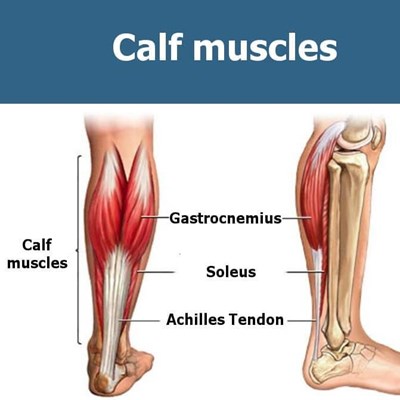
Gastrocnemius
The gastrocnemius muscle is the larger calf muscle, forming the bulge visible beneath the skin. The gastrocnemius muscle has two parts or “heads,” which together create its diamond shape.
- Origin: Lateral head: Posterolateral aspect of lateral condyle of a femur, Medial head: Posterior surface of the medial condyle of the femur, and the popliteal surface of the femoral shaft
- Insertion: Posterior surface of the calcaneus via the calcaneal tendon or tendo-Achilles.
- Innervation: Tibial nerve (S1, S2)
- Function: Talocrural joint: Foot plantar flexion, Knee joint: Leg flexion
A trigger point in the gastrocnemius muscle.
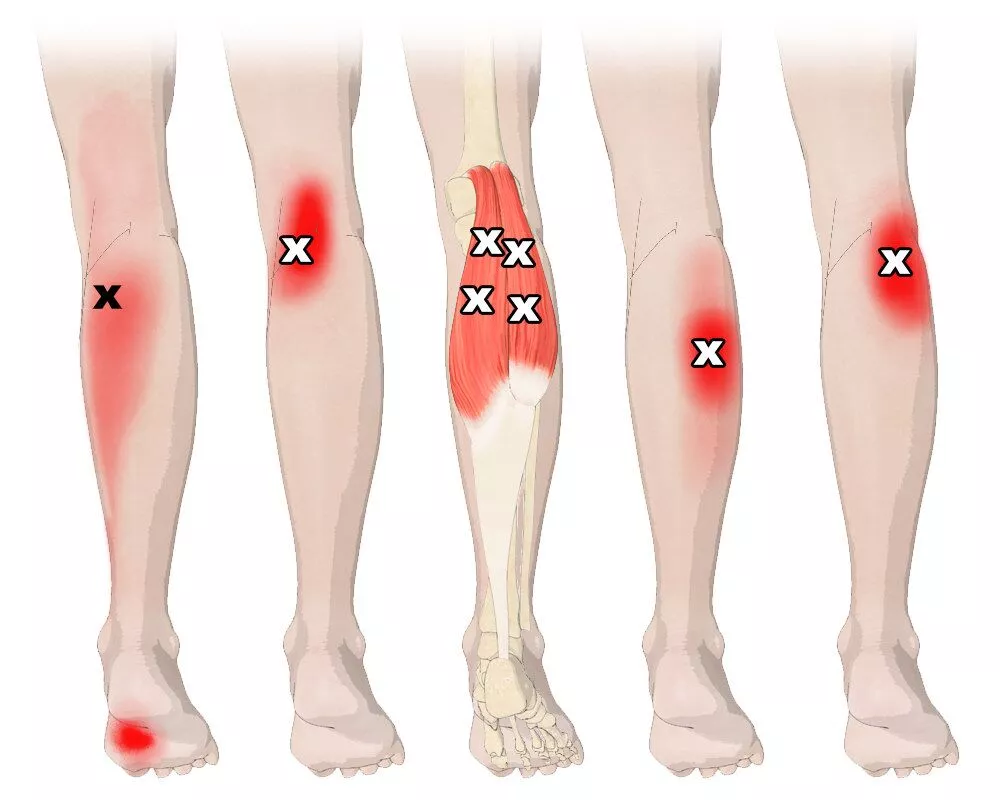
Soleus
The soleus is a smaller muscle, flat muscle that lies underneath a gastrocnemius muscle.
- Origin: Soleal line, medial border of tibia, head of the fibula, posterior border of a fibula
- Insertion: Posterior surface of the calcaneus via calcaneal tendon or tendo-Achilles.
- Innervation: Tibial nerve (S1, S2)
- Function: Talocrural joint: Foot plantar flexion
A trigger point in the soleus muscle.

The gastrocnemius muscle and soleus muscles taper and merge at the base of the calf muscle. Tough connective tissue at the bottom of the calf muscles merges with the Achilles tendon. The Achilles tendon inserts into a heel bone. During walking, running, or jumping, the calf muscle pulls the heel up to allow forward movements.
What is trigger point?
Trigger points are those tender lumps in the muscles that therapists find. They begin small, and you only know they are there when a therapist gently presses upon them. Over time they can grow to where they are quite substantial but still not causing pain, but will eventually start shooting pain when they are aggravated.
A trigger point is a sore point in a muscle when you push on it or what most people would be called a knot. You know that bit of the muscle when you are rubbing your tight shoulders that just does not feel right and hurts. When a trigger point is very sensitive it can lead to pain without being pressed on and this is a major cause of muscular pain that most people suffer from. The trigger points are a ‘hypersensitive nodule within a taut band of tissue that can be referred to as pain’.
Trigger points radiate pain to the affected area when pressure on sensitive points in the muscles is applied to them and sometimes spontaneously with no pressure. and sometimes in seemingly not related body parts. This is called referred pain. Trigger points are discrete, focal, hyperirritable spots situated in a taut band in the skeletal muscles. They produce local pain in a referred pattern and often accompany chronic musculoskeletal disorders.
Acute trauma or repetitive microtrauma may cause the development of stress on muscle fibers and the formation of trigger points. Patients may have regional, persistent pain resulting in a reduced range of motion or movement in the affected muscles. These include muscles used to maintain body posture, like those in the neck, shoulders, and pelvic girdle.
Trigger points may also manifest as tension headache, tinnitus, temporomandibular joint pain, reduce or decrease range of motion in the legs, and low back pain. Palpation of a hypersensitive bundle or nodule of fiber of muscle harder than normal consistency is the physical finding normally associated with a trigger point. Palpation of the trigger point will elicit pain directly over the affected area and/or lead to radiation of pain toward a zone of reference and a local twitch response. many modalities, such as the Spray and Stretch technique, ultrasonography, Transcutaneous electrical nerve stimulation, manipulative therapy, and injection, are used to inactivate trigger points. The trigger-point injection treatment is one of the most effective treatment modalities to inactivate trigger points and provide prompt relief of symptoms.
There are four types of trigger points active trigger points, latent trigger points, secondary trigger points, and satellite trigger points.
Active trigger Point
The active trigger point is defined as causing pain when no pressure is placed on them. and this means they are painful even if you are not massaging them. This is only one of the most common causes of Myofascial pain and it can be experienced in any area of the body. Common eg, active trigger points are back pain including sciatica, knee pain, neck pain, headaches, and so on. where you gently press and the red areas are the referral pain pattern.
This helps diagnose where the trigger points are. An active Trigger point is any point that causes tenderness and referral pain pattern on palpation. Almost always central. Trigger Points are active and some satellite Trigger points are also active but not necessarily all of them.
Latent Trigger Point
A latent trigger point is a point you gently press on that causes pain and often refers pain to in another area. This type of trigger point is seen as the precursor to active trigger points. If you have this type of trigger point that gets worse through further strain then they can become active trigger points and that is when you generally feel pain and that need anyone to help you get out of the pain.
Inactive or Latent Trigger points can develop anywhere and under fingertips feel like lumps, but they are not painful. It can increase the stiffness of the muscles. It has the potential to be active but is dormant. this trigger point is a dormant (inactive) area that has the potential to act like a trigger point. It may cause weakness of the muscle or restricted movement. These nodules do not lead to pain when touched. They can remain inactive for years and become active when there is stress or trauma.
Secondary trigger point
This is situated in a muscle other than the one that holds the active trigger point. It could be disturbed at the same time as the active trigger point. This is a painful point in the muscle that becomes active when you stress other muscles.
Satellite Trigger Point
The satellite trigger points are an area where the pain is referred to. For example, if you are to get pain in the shoulder and you found that the trigger point was in the shoulder referring to the elbow, the elbow points would be these types of trigger points. And so you will be also working on these elbow trigger points as they would be involved as well. Primary or Central Trigger Points are those that lead to severe pain locally at the pressure with irradiation according to referred pain map. Generally, they are based around the center of a muscle belly.
Secondary or Satellite Trigger Points arise in response to existing central trigger points surrounding the muscles. They usually spontaneously withdraw when the central Trigger point is healed. It can be present in the form of a cluster. This trigger point becomes inactive because it overlaps with the region of another trigger point. This is a painful spot that becomes active because it’s situated near another trigger point.
What are the Symptoms of a Trigger Point in calf muscle?
How do you know it is a trigger point or not?: There are some of the common symptoms you will get that can differentiate trigger points pain. the nodule or band you are pressing on is in a muscle and not on the nerve or bone. The point you press on refers to pain. This is not such nerve pain as when you gently press on a nerve it is like an electric shock or needles or pins. A trigger point referral is not like this. this is more of a dull aching pain that radiates pain. You have muscle pain that won’t go away and even gets worse when you do exercise or move. You have chronic muscle pain.
- A patient generally asks for help due to a chronic pain state (ex: headaches, aches everywhere, morning stiffness, Temporomandibular joint syndrome, tinnitus), which, in reality, is often physically away from the active trigger point.
- Weakness of the Muscles or imbalance, altered motor recruitment, in either the affected muscle or in functionally related muscles.
- Changes in Range of Motion (ROM).
- Painful movement. and/or that movement sometimes can exacerbate symptoms.
- Tension headaches, migraines, tinnitus, and temporomandibular joint problem. as accompanying symptoms.
- Postural abnormalities and compensations
What is referral pain?
Some ideas are suggested that the referral pain if you experience is happening in the brain. It is such as “crosstalk” you get in electrical cables that are closed to each other. These can happen in the brain sensation areas in the brain that are close to each other. an eg, if the trigger point is in the gluteus muscle and refers down the leg area of the leg is close to the area in the brain and that is why you feel it there. A few simple ideas are that the muscle may be attached to the area you feel the referral, which is common and may be transmitted through the fascia or nerves.
Referred pain, also called reflective pain, is a pain perceived at a location other than the site of the painful stimulus. Pain is reproducible and does not follow myotomes, dermatomes, or nerve roots. There is no specific joint swelling and/or neurological deficits. Pain from a myofascial Trigger Point is a discrete, distinct and constant pattern or map of pain with no gender or racial differences able to reproduce symptoms – referred pain map. Radiating pain is slightly different from the referred pain. for example, the pain related to a myocardial infarction could either be referred to as radiating pain from a chest. Referred pain is when the pain is located away from and/or adjacent to the organ involved. for instance, when a person has pain only in their left arm or jaw, but not in the chest.
What causes of the trigger point in the calf muscle?
Trigger points develop in the myofascial, mainly in the center of a muscle belly where the motor endplate enters. (primary or central Trigger Points). Those are palpable nodules within the tight muscle at the size of 2 to 10 mm and can demonstrate at different places in any skeletal muscle of the body. We all have Trigger Points in a body. That can be present even in babies and children. and but their presence does not necessarily result in the formation of pain syndrome. When it happens, Trigger Points are directly associated with myofascial pain syndrome, psychological disturbance, somatic dysfunction, and restricted daily functioning.
Some ideas have been shown to cause trigger points. loss of nutrients in the tissue including oxygen. When the blood supply to parts of the muscle is decreased it can cause these nodules in the tissue that then cause pain. Overuse or overactivity of the muscle through exercise, posture, or working at a computer all day without breaks can cause the muscle fibers to become chronically contracted which over time causes pain. An injury like a strain to the muscle/fascia. and when this heals it may leave trigger points.
- Aging,
- Injury sustained by a fall, birth trauma, or stress.
- Lack of exercise: Generally in sedentary persons. of which 45% are men,
- Bad posture: upper crossed pattern and lower crossed pattern, swayback posture, telephone posture, cross-legged sitting,
- Muscle overuse and respective micro-trauma, weightlifting,
- Chronic stress conditions: anxiety, depression, psychological stress, and trauma.
- Vitamin deficiencies: vitamin C, vitamin D, vitamin B; folic acid; iron;
- Sleep disturbance or poor sleep,
- Joint problems and hypermobility.
How is a trigger point diagnosed in the calf muscle?
There are four main criteria to diagnose the trigger point.
- A taut band within the muscle fiber.
- The area that is sensitive to pressure within that taut band of tissue.
- The point refers to pain or sensation in other areas ie: you gently press on the trapezius muscle and you feel it radiating pain or sensation into the head, causing a headache.
- The twitch response in the muscle is gently pressed on a dry needle.
Active and Passive Trigger Points
There are mainly two types of trigger points that physical therapists treat: active trigger points and passive trigger points. Passive trigger points are simply hurt at their exact location. If you have a painful muscle knot in your calf muscle and someone presses on it, the pain will be felt right where the pressure is on the knot.
An active trigger point refers to pain in another part of your body. If someone presses on an active trigger point in a calf or posterior of the leg. you may feel pain in your leg along with symptoms in your foot.
Regardless of the type of trigger point you have or the fact that we do not fully understand what is happening when trigger points are formed. And you may benefit from your physical therapy to help manage your problem.
How Do You Treat a Trigger Point in the calf muscle?
Ideally, when you treat a trigger point you are pressing on it just hard enough but not too hard. you sorta have to get the feel for it. This can sometimes be difficult to do for yourself. You can hold the trigger points, rub them in a circular motion (either direction), or work the trigger point in a back-and-forth direction. One method may provide a better result than the other on a case-by-case basis. Apply pressure or rub out the trigger point for at least ten-fifteen seconds. If the pain is improving as you treat that point then continue until there is no further relief. And sometimes you can feel the trigger point “wash away” beneath your fingers and disappear.
Some practitioners use modality and a few tools such as wooden or metal spoon-shaped devices and other hand-held appliances, mechanical vibration, electro-stimulation, laser therapy, dry-needling, or injection to treat a trigger point. However some of these can be beneficial, preference is to use the hands as much as possible – it allows you to feel the area. you are working on, and often the dissipation or release of the trigger point can be felt. Using a hands-on approach also decreases the chances of pressing too hard and creating further damage or bruising, as well as not pressing hard enough or long enough resulting in inadequate results. If the hands are not strong enough or you are not able to reach a suspected trigger point, then tools such as a foam roller, tennis ball or golf ball, Thera Cane, and/or The Stick, may be beneficial.
Medical treatment
Milder forms of pain may be relieved by or NSAIDs(nonsteroidal anti-inflammatory drugs) like aspirin, ibuprofen, and naproxen. Both Tylenol (acetaminophen) and NSAIDs relieve pain caused by muscle pain and stiffness, and additionally, NSAIDs reduce inflammation (swelling and irritation).
Trigger Point Injection (TPI) for a trigger point in calves
TPI is a procedure of inserting a small needle into the patient’s active Trigger point. This injection contains saline or local anesthetic and may include the corticosteroid. And with the injection, the Trigger point is made inactive and the pain is alleviated. commonly, a brief course of treatment will result in sustained relief. Injections are performed by a physician and generally take a few minutes. Many sites may be injected in one visit. If a patient has an allergy to a certain drug, no medications can be used in the dry needle technique.
Physical Therapy Treatment for a trigger point in the calf muscle
Physiotherapy treatments may include:
Physical therapy involving gentle stretching and exercise may be useful for recovering full range of motion and motor coordination. Once the trigger points are gone, muscle strengthening exercises can start, supporting the long-term health of the local muscle system. A physiotherapist can devise a plan to help relieve your pain based on your signs and symptoms. If you have a trigger point in the calf muscles, treatment is going to be more successful if you see your healthcare provider early after symptoms develop before trigger points are established. In some chronic cases of myofascial pain, combinations of physiotherapy, myofascial release therapy, trigger point injections, or massage are needed. Many treatments are available and your medical professional will likely use a mixture of the following to manage your pain and restore affected muscles. Physical therapy to relax, stretch and strengthen muscles. Myofascial release(MFR) techniques and trigger point therapy may be helpful for your muscle knots and trigger points. Myofascial release is thought to help properly align the fascia surrounding your muscles. This can help improve circulation and the normal movement of your muscles.
Trigger point therapy is performed by having your Physical therapist press and hold on top of the trigger points in your muscles. This temporarily cuts off circulation to a tissue. This cutting off of circulation increases a chemical called “nitric oxide in the tissue”. Nitric oxide signals the body to open up microcapillaries, thus bringing in more blood flow and breaking a pain spasm pain cycle.
- If possible, everyday-life factors that arouse the emergence of a TrPs(Trigger Point) must be eliminated or decreased,
- Postural training and education about postures and lifestyle,
- Passive stretching and Foam Roller stretching, a few times a day,
- Self-massage, sometimes a day, and especially Deep Stroking Massage, done rhythmically and in only one direction,
- Strengthening: at the start only isometric and then isotonic exercises,
- Ischemic Compression Technique: In which, the term has been used to describe treatment in which ischemia is induced in the TrPt zone by applying sustained pressure. Although, this principle is questionable since the nucleus of the TrP intrinsically presents important hypoxia.
- This technique aims to free the contracted sarcomeres within the Trigger Point. The pressure applied should be sufficient to produce gradual relaxation of the tension within the Trigger Point zone, without causing pain. Yet both techniques show imitate significant improvement in the range of movement after treatment.
If you seek out care from a physical therapist for trigger point therapy, do not go to eliminate your trigger points. Rather, focus on learning strategies to help to manage painful trigger points. Physical therapy exercise for muscle knots can help you manage your pain. and help determine the underlying body mechanics that may be making the muscle knots painful.
Physiotherapy helps to relieve trigger points in the calf and may involve:
There are two different approaches to the treatment of myofascial trigger points. There are non-invasive techniques like Therapeutic Ultrasound, Low-level laser therapy, and TENS(Transcutaneous Electrical Nerve Stimulation).
Pain management
Low-level light therapy / cold laser
lasers using to stimulate the release of pain-relieving chemicals. low-level light therapy is also known as cold laser, in which the trigger point is exposed to near-infrared light
Ultrasound therapy
Ultrasound therapy uses sound waves to increase blood circulation and warmth, which may promote healing in soft tissues affected by a trigger point in calf muscles. These machines transmit sound waves into the soft tissue through a sound-conducting gel applied to the skin. The sound waves can heat up and relax muscles, increasing blood flow, and removing scar tissue. The pain-relieving effects may be minimal. But, this treatment may reduce or diminish stiffness and increase mobility if done before stretching. This therapy uses sound waves to penetrate soft tissues. This therapy has been successfully used for pain associated with rheumatoid arthritis, so it may be worth discussing with your doctor.
TENS (Transcutaneous electrical nerve stimulation)
Transcutaneous electrical nerve stimulation involves sending low-voltage electric signals from a small device to the painful area through electrodes attached to your skin
Massage therapy:
There are some types of massage treatments that can relax myofascial trigger points. These include:
- passive rhythmic release
- active rhythmic release
- shiatsu (acupressure)
- trigger point pressure release
Massage techniques increase blood flow and warm up muscles. This can help reduce stiffness and relieve pain. your therapist applied pressure on your trigger points, which will aggravate the pain and then release the muscle tension. A physiotherapist may massage your affected muscle to help relieve your pain. A physical therapist may use long hand strokes along your muscle or place pressure on specific muscle areas to release tension. Massage therapy using trigger-point release techniques could also be effective in short-term pain relief. massage may improve the condition.
Myofascial release therapy
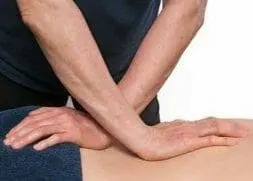
Myofascial release therapy involves gentle fascia manipulation. Most of the myofascial release treatments take place during the massage therapy session. your therapist will start massaging and stretching the areas that feel rigid with light manual pressure. your therapist then aids the tissue and supportive sheath in releasing pressure and tightness. The process is repeated multiple times on the same trigger point and another trigger point until your therapist feels the tension is fully released.
These areas where the massage therapist is working may not be near where the pain originates or where you feel pain most prominently. Myofascial release works the broader network of muscles that might be leading to the pain. It tries to reduce tension throughout your body by releasing trigger points across a broad section of the muscular system. Myofascial release therapy can also be done at home using a tool like a massage gun to apply pressure to the muscles and interconnective tissues or a foam roller. This form of myofascial release can be especially helpful for athletes struggling with fascial tension as a result of repetitive muscle use.
Myofascial Release is the hands-on treatment performed on skin with no oils or any creams. The gentle tension between a therapist’s hands and a patient’s skin is what allows access to the fascia in a way that the gliding effect of the traditional massage cannot achieve. The myofascial release incorporates many new types of body manipulation to improve function and movement.
Trigger point release therapy
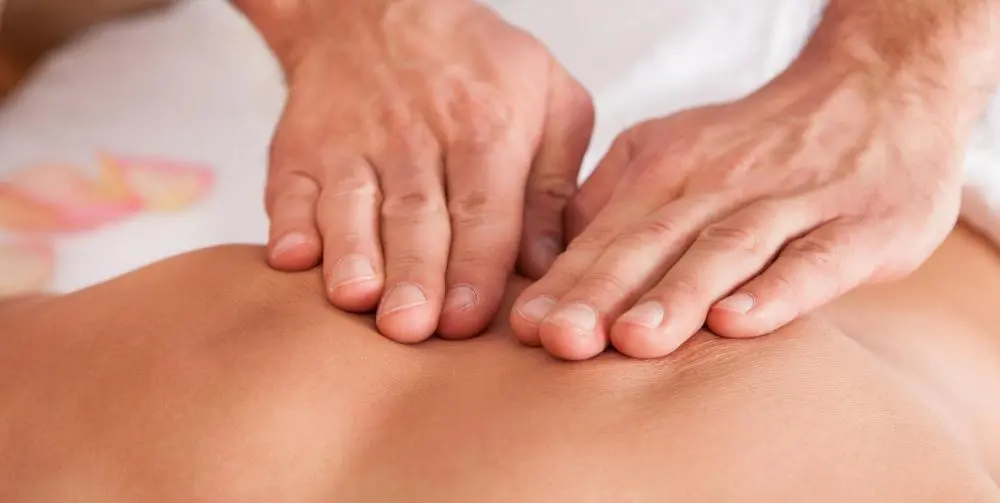
There are some ways you can release a trigger point. The most common way is using sustained pressure with the thumb, fingers, elbow, or a massage ball or some tool. Dry needling is also a form of trigger point therapy that is becoming more extensive as its effectiveness is being seen.
Manual therapy for Trigger Points: this generally involves sustained pressure on the trigger point until it releases. If you find the nodule within the taut band of tissue you hold pressure on it until the pressure starts to decrease. This may take from thirty seconds to a few minutes. If the trigger point is chronic then it may take multiple sessions to release this pain. You can try this will the ball to help to release the trigger point. This method is also called ischemic pressure.
Precaution of trigger point therapy: Persons with infectious diseases, open sores, and/or recent injuries should wait until they have recovered before beginning trigger point therapy. The person taking anticoagulant prescription drugs may experience bruising after trigger point therapy.
Trigger point dry needling for calf pain
The dry needling technique is one of the fastest ways to inactive trigger points. Dry needling, in which the doctor will insert a thin needle directly into and around your trigger point, move it around, and poke it in and out. dry needling technique involves inserting a needle into several places in and around the trigger point. It can be quite painful and helps break up muscle tension, but it’s one of the most effective ways to inactivate a trigger point and reduce the pain. Acupuncture also appears to be helpful for a few people who have this trigger point. some therapists use acupuncture needles, which are smaller and less painful than hypodermic needles. There are some key differences between dry needling and acupuncture. pushing thin needles into the trigger point to reduce tightness, increase blood flow and relieve pain. A systematic review concluded that dry needling for the treatment of this pain syndrome in the lower back appeared to be a useful adjunct to standard therapies, but that clear recommendation could not be made because the published studies were small and of low quality.
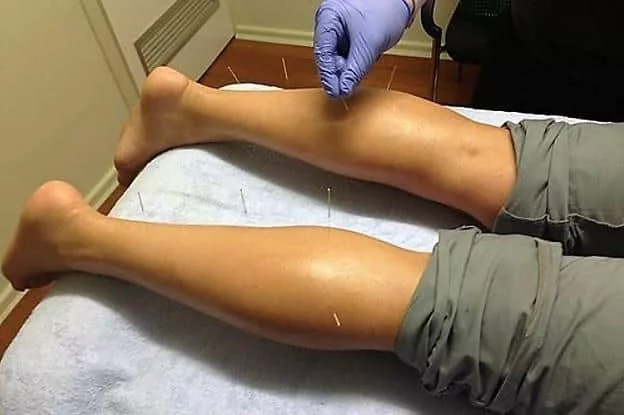
Trigger Point dry needling is the procedure in which a disposable, sterile, solid filament needle is inserted into the skin and muscle directly at a myofascial trigger point. the needle that is inserted into a contracted painful knot in the muscle to create a local twitch reflex which is both diagnostic and therapeutic as it is the first step in breaking the pain cycle as research shows will diminished muscle contraction, and reduce chemical irritation, improve flexibility and decrease pain. myofascial trigger points consist of multiple contraction knots, which are related to the production and maintenance of the pain cycle.
Wet needling/trigger point injections
Trigger point injections are such as dry needling. Typically, doctors use a needle to inject saline or a local anesthetic like lidocaine into the trigger point to relieve pain. The effects are compared to dry needling, but the procedure may cause less discomfort and Trigger point injections with steroids are also an option. Wet needling also known as trigger point injections, is the same as dry needling except for the doctor simultaneously injecting a numbing agent or steroid.
Stretching techniques (e.g. spray and stretch)
A physiotherapist may lead you through gentle stretching exercises to help ease the pain in your affected muscle. If you feel trigger point pain when stretching, the physiotherapist may spray a numbing solution on the skin. Stretching helps many people with a trigger point in the calf muscle. Some physiotherapists apply a cold, numbing spray to the muscle area before leading someone through stretches. There are also some gentle stretches and exercises you can try at home to decrease pain.
“Stretch and spray” technique: This technique involves spraying the muscle and trigger point with a coolant and then slowly, manually stretching the muscle.
Heat: Applying heat, via a hot pack or a hot shower, can help relieve muscle tension and reduce or decreased pain.
Cold pack
Acupuncture and relaxation therapies, including cognitive behavioral therapy and biofeedback also good for improving sleep and reducing anxiety.
Posture training
Which, Improving your posture can help relieve myofascial pain, particularly in your neck muscle. Exercises that strengthen the muscles surrounding your trigger point will help you prevent overworking of any one muscle.
Exercises to help change the posture of your body and the way your body moves.
Kinesiology taping
Many physical and manual therapy techniques such as:
- Post-isometric relaxation
- Active Release Techniques
- Trigger point pressure release
- Muscle energy techniques
Other treatment options include:
- Dietary changes to reduce inflammation and prevent ingredients that seem to trigger pain
- Heat
- Behavior modification such as exercise, posture, work station setup, yoga, meditation, sleep habits, etc.
- Physiotherapy, including steps to realign posture, as needed
- Acupuncture
Home advice
One of the best things you can do for the trigger points is to learn to self-manage the condition. This may include performing self-massage therapy trigger point techniques. These Treatments are included:
- Use a Back-Nobber to press into the trigger points
- Rolling over a tennis ball to press into the trigger points
- Foam rolling over the muscles to help smooth out fascial tissue
- One thing is for certain-engaging in an active treatment program of posture correction and exercise is superior to passive treatments for the trigger points. Check in with a physical therapist for a complete assessment of your condition to learn about self-care strategies to manage your trigger points.
These Treatments are also you can do at home including:
- Heat as in a heating pad. Some people benefit from cold/ice packs.
- Exercise Specifically weight-bearing exercises to help strengthen muscles, stretching exercises to stretch muscles, and aerobic exercises to get more oxygen into the muscles.
- Over-the-counter(OTC) pain killers such as acetaminophen or NSAIDs like ibuprofen or naproxen. Don’t take these drugs if you are taking analgesics or NSAIDs prescribed by your doctor.
- Relaxation techniques include yoga to stretch, decrease stress, and relax the muscle, breathing exercises, and meditation.
- changes in your diet avoid foods known to cause inflammation.
- Soaking in warm water.
- Massages.
- The duration of this pain syndrome varies from person to person. With treatment, it may go away after a day or some weeks, but it can take longer for some. How fast this pain resolves depends on some factors, including:
- Your general health.
- Diet.
- Amount and quality of sleep.
- Take care of yourself if you have this trigger point in your calf muscles. Self-care measures to maintain your body healthily may make it easier for you to concentrate on coping with your pain.
Try to:
- Exercise: Gentle exercise can help you cope and improve with pain. When your pain allows, get moving. Ask your doctor or physiotherapist about proper exercises.
- Relax: If you’re stressed and tense, you may experience increased pain. Find ways to relax. Meditating, talking with friends, or writing in a journal can all be helpful.
- Take care of your body: Eat a healthy diet of vegetables and fruits. Get enough sleep so that you wake rest. Take care of the body so that you can put your energy toward coping with your pain.
How to Prevent trigger points in calf muscle?
Several of the preventable suggestions to follow are also pain management strategies:
- Maintain proper sleep hygiene.
- Reduce your stress.
- Get exercise.
- Prevent muscle injury. (this is an eg, of preventing muscle injury, if the shoulder bag or purse you carry is too heavy).
- Practice relaxation methods.
- Eat a proper healthy diet, like the Mediterranean diet.
Some foods lead to inflammation. and inflammation increases myofascial pain. Some foods to avoid include:
- Fried foods (French fries, for example).
- Dairy products(milk, cheese, yogurt).
- Refined carbohydrates and foods with refined flour such as pizza, pasta, pastries, breakfast cereals, and white bread.
- Margarine (butter), vegetable oil.
- Sugary foods and beverages like soft drinks.
- Red meat (burgers, steaks).
- Artificial sweeteners and general additives are “no sugar added” products, zero-calorie “diet” soft drinks, and processed foods that include candy, ice cream, and fruit.
- Processed meat like hot dogs, and sausage.
DISCLAIMER:
This article is intended or purposeful for your general informational purposes only and does not address particular circumstances. it is not a substitute for professional advice(or guidance) or help( or assistance) and should not be relied on to make decisions of any kind. A few or any actions you take upon the information presented in this article are strictly at your own risk and responsibility.

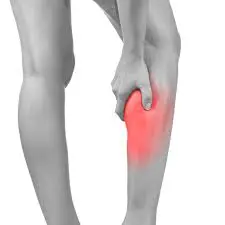
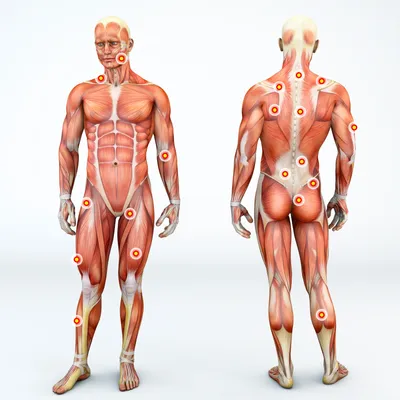
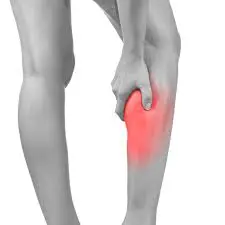

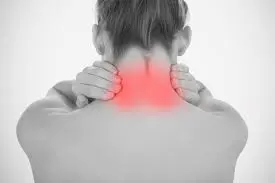
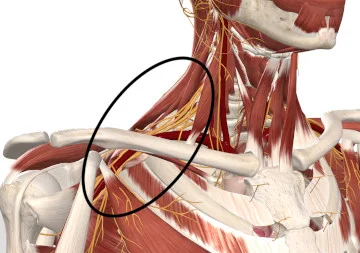
One Comment